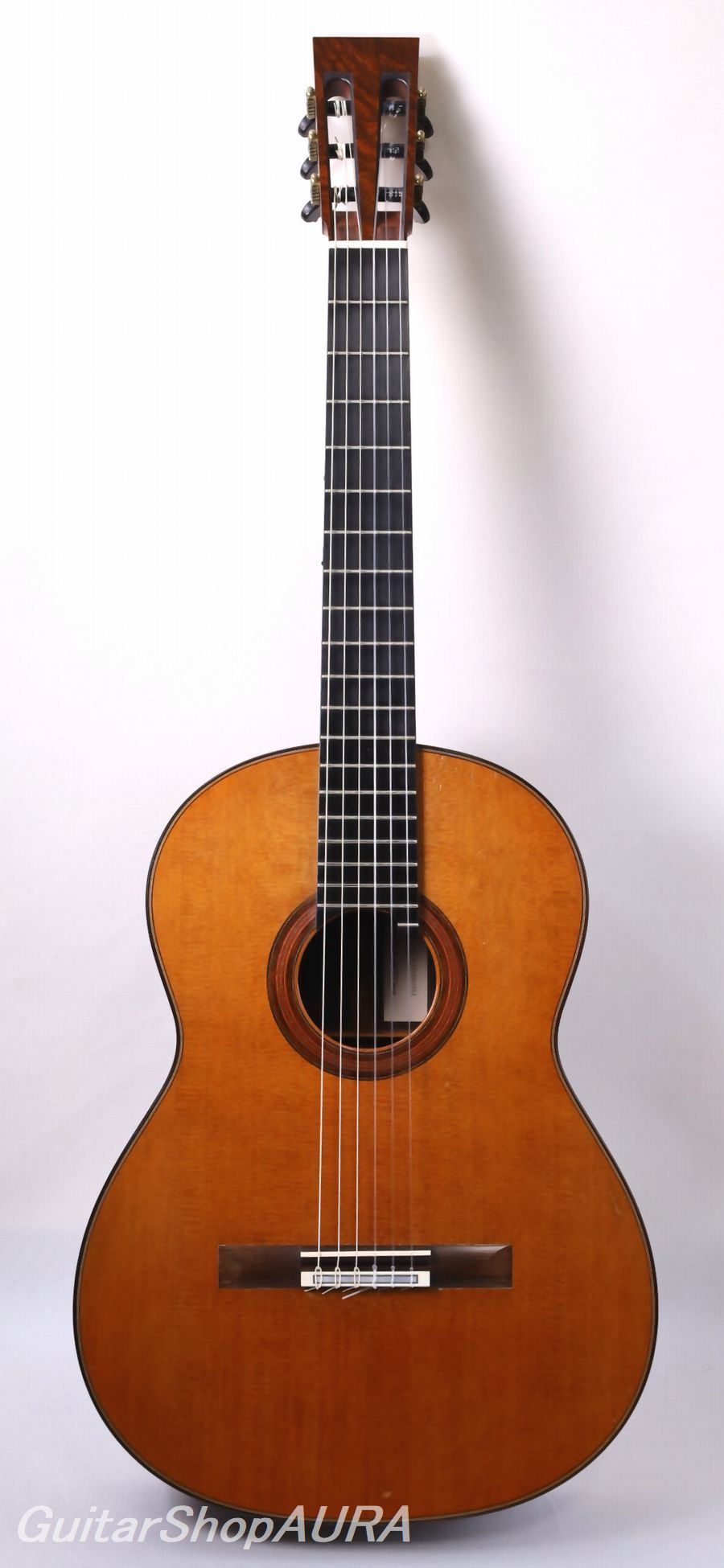
| Instrument | Roland Scharbatke |
| Category | Imported Classical Guitars 〔Used〕 |
| Number/Model | |
| Scale length | 650mm |
| Country | Germany |
| Year | 2002Year |
| Top | Solid Ceder |
| Side&Back | Solid South American Rosewood |
| Condition※ | 7 |
| List price | INQUIRE |
| Price (tax included) | Please Inquire |
| option | with Hardcase |
Click to enlarge the photos below
Neck: Mahogany
Fingerboard: Ebony
Finish(Top): Shellac
Finish(Back & Sides): Lacquer
Tuning Machines: Rogers
String Height(1st): 3.0 mm
String Height(6th): 4.0 mm
[Luthier Information]
Roland Scharbatke was born in 1952 in Gotha, Thuringia, Germany—a town famously associated with Karl Marx’s “Critique of the Gotha Program.” In 1959, at age seven, his family relocated to Iserlohn in North Rhine-Westphalia, then part of West Germany. This move was a significant undertaking at the time, given the growing East-West divide that would soon be symbolized by the Berlin Wall. Fortunately, Roland and his family were able to settle permanently in Iserlohn, where he later began working as an apprentice furniture maker.
During this period, Roland developed a passion for guitar playing and also grew interested in guitar making. After passing his master craftsman exam as a furniture maker in 1979, he apprenticed under Gerold Karl Hannabach (1928–2015) in Bavaria. Notably, Gerold’s uncle Anton Hannabach founded the renowned Hannabach string company in the Czech Republic, which later passed to Anton’s son Arthur after moving to Bavaria. However, Gerold pursued an independent path as a string instrument maker, separate from the family’s string manufacturing business. Already an accomplished furniture maker, Scharbatke rapidly mastered the skills of lutherie under Gerold’s guidance.
In 1989, he passed the master craftsman exam for plucked string instruments and established his own workshop, launching his eponymous brand that same year.
Scharbatke’s instruments are renowned for their exquisite woodworking—simple yet aesthetically refined design—and reflect a broad and deep acoustic understanding, likely influenced by his prolific and versatile mentor Gerold. While firmly grounded in the Spanish-German classical guitar tradition and carefully avoiding undue deviation, his guitars exhibit a contemporary character that distinguishes them from modern double-top instruments.
[Instrument Information]
We present a used Roland Scharbatke guitar made in 2002. The top bracing features two harmonic bars (one long, one short) above the soundhole on the neck side, and a single harmonic bar below on the bridge side. On each side of the soundhole (treble and bass sides), two short braces cross in an X pattern, covering the area divided by the harmonic bars. The lower bout employs seven symmetrically arranged fan braces: the center three are placed nearly parallel and close together, spanning roughly the width of the soundhole diameter, while the other four fan outwards. Unlike standard designs where two V-shaped bars support these braces at the bottom, here a single transverse bar supports the brace tips, with an additional short bar near the end block.
Beneath the bridge plate is a thin reinforcement plate, from whose ends two pairs of short braces extend toward the ribs. The overall structure is sophisticated, with the guitar’s resonance tuned slightly above an F note.
The instrument’s tonal design is characteristically “German,” with all registers fitting into a coherent phase. There is a clear contrast between the bass’s rich “bass” character and the treble’s clear “voice.” The low end is particularly attractive, resonant with a deep, grounded quality. The sound’s clarity is enhanced by the body’s volume, producing an elegant reverberation.
This guitar also possesses a romantic expressiveness—unusual for a “German” guitar—featuring sharp articulation and dynamic nuance. However, some upper notes may exhibit stronger-than-usual resonance.
The minimalist design, inspired by Japanese aesthetics, is evident in the square headstock shape, which is inlaid with custom tuning machines by Canadian premium brand Rodgers. The rosette’s delicate yellow-green pattern beautifully harmonizes with the subdued reddish-brown cedar top. The bridge plate features ivory with mother-of-pearl inlay, adding a refined accent to the overall appearance.
There are no major repairs or modifications. The top shows scratches and playing marks around the fingerboard sides and soundhole, with a few dings near the bottom—typical wear for its age. The ribs and back have some finish wear where the player’s body contacts the guitar, but otherwise only minor signs of wear from clothing. The back of the neck has shallow but widespread fingernail marks. Playability is excellent: the neck is in proper condition, frets show slight wear mainly on the first five, and the fingerboard has a 20-fret treble extension. The neck profile is a thin D-shape with a flat contour. String height at the 12th fret is set at 3.0 mm (1st string) and 4.0 mm (6th string). Both nut and saddle are made of ivory; the saddle features deeply cut string slots, ensuring firm string seating. There is about 1.0–2.0 mm of saddle material remaining.
The guitar responds linearly to both right- and left-hand technique, offering minimal resistance. The string tension is relatively high; users may wish to adjust string gauge or tension to suit their preferences. The guitar weighs approximately 1.54 kg.